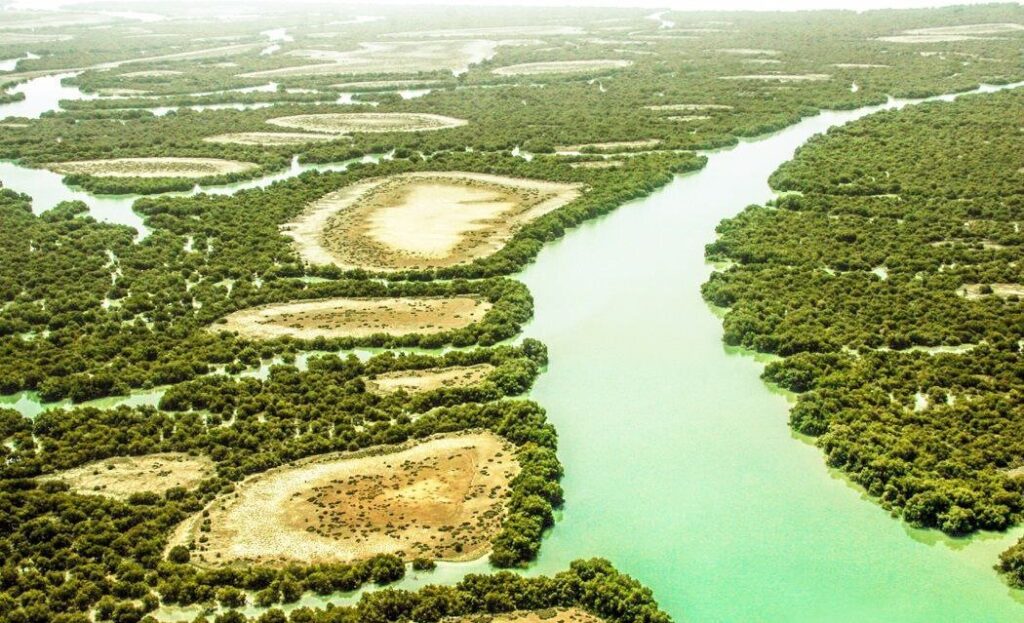Tehran – Researchers at the National Institute of Marine Science reveal that mangrove ecosystems in the northern Persian Gulf face a variety of environmental and anthropogenic pressures.
Mangrove trees offer many benefits to a wide range of species, including birds, fish, crustaceans and even terrestrial animals, as a wonder of the marine environment, and also stabilize the soil. Mangrove forests are rich ecosystems that support planets and humanity in unique ways by providing conditions for fish growth, carbon storage and fighting floods.
They can store about 6-8 tonnes of carbon per hectare per year. They contribute to creating a complete ecosystem. On the water, mangrove trees provide bird habitat, while amphibians and small fish live in the roots. Mangroves play an important role in preserving beach soil and protecting it from erosion. Mangrove trees play an important role in maintaining the ecological balance of the coast.
Iran’s mangrove forests consist primarily of Avisenna Marina, known primarily as Hara, and are named after the great Iranian scientists of the 11th century, Avisenna or Abu Alisina.
This study uses a multidimensional approach that includes satellite-derived, drone-based, and field-measured data to assess the ecological dynamics of mangroves in Deyer City (MDC) in the northern Persian Gulf.
Satellite images from Google Earth (2011–2022) reveal changes in the MDC region and continue to deteriorate rapidly until 2018 following notable planting efforts.
Mangrove forests, which initially covered 2.2 hectares in 2011, had expanded to 3.2 hectares by 2015 due to planting efforts, but by June 2022 it had decreased to 1.7 hectares.
The construction of non-standard roads and bridges in 2018 disrupted freshwater flows from the upper regions and emerged as a major factor in degradation.
Drone-based observations for March 2023 provided a detailed map and revealed that 44% of healthy mangroves were damaged. Field measurements carried out in November 2023 showed higher salinity levels in MDC compared to other adjacent mangrove regions.
Principal Component Analysis (PCA) also showed differences in environmental conditions for MDCs compared to environmental conditions for the two sampled habitats (Nayband and Melgonzeh).
This study suggests that long-term multifaceted surveillance, particularly at various points within mangrove ecosystems, is essential for effective management.
By discussing these local variations in salinity and its effects, the case studies highlight how to take into account site-specific conditions when assessing mangrove health and interpreting the effects of salt stress.
This study also highlights the important need to address human-induced threats to mangrove ecosystems. Emergency conservation and management strategies are essential to mitigate the effects of artificial pressures and to ensure the survival of mangrove ecosystems facing environmental challenges.
Additionally, the impacts of climate change should be taken into consideration when planning conservation and management strategies.
Temperature, sea level rise and increased salinity pose a long-term threat to mangroves.
Therefore, mitigation of both human-induced and climate-related stressors is essential to develop integrated conservation strategies combined with restoration efforts and to increase the resilience of mangrove forests.
Mangrove forests face multiple challenges, but conservation efforts, community involvement and sustainable management practices can help mitigate these threats and contribute to the conservation and restoration of these critical ecosystems. Regular assessments of mangrove ecosystems are essential for conservation, sustainable management, and the well-being of both the natural environment and the human community that dependent on them.
Failure to address these challenges can result in irreparable consequences that pose a major threat to the environment.
mt/mg

